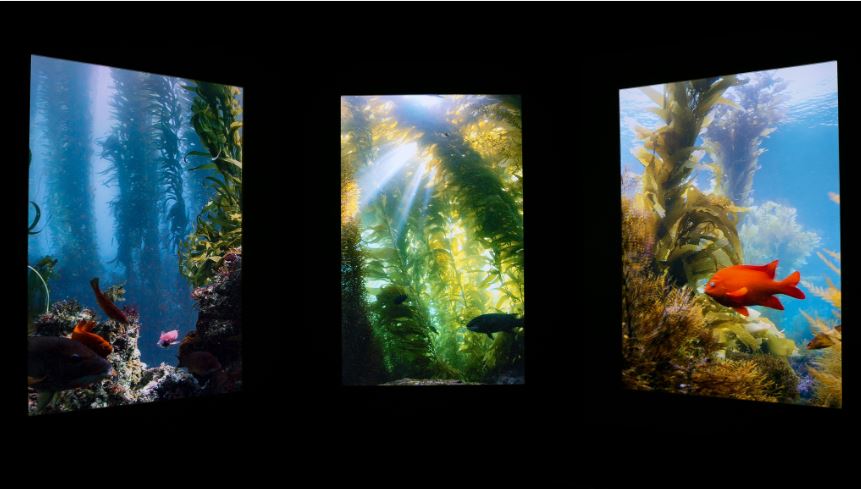Discover deep-sea wonders in National Geographic Encounter: Ocean Odyssey, a one-of-a-kind immersive experience which opened October 6 in the heart of Times Square in New York City. The journey stretches from the coral reefs in the Solomon Islands across the Pacific Ocean to a giant kelp forest off the coast of California. Life-size, photorealistic 20' sharks, 50' humpback whales, and a pair of battling Humboldt squids with as many as 40,000 teeth each are a few of the creatures audiences encounter on the digital “underwater” dive.
“We wanted to provide ‘entertainment with a purpose’ and push the boundaries of typical attractions by combining National Geographic’s incredible storytelling with an innovative blend of immersive, cutting-edge visual effects and technology, resulting in a completely new kind of entertainment experience,” says Lisa Truitt, chief creative officer and a managing partner of SPE Partners, the creators and producers of National Geographic Encounter. To create such an experience, SPE recruited an international team of Academy, Grammy, and Emmy Award-winning artists, including design firm Falcon’s Creative Group, visual effects team Pixomondo, technology integrator Kraftwerk Living Technologies, producer and composer David Kahne, and Mirada Studios.

“We introduced elements that are not traditional,” explains David Schaefer, vice president of Falcon’s Creative Group. “We wanted to have diversity in the experiences, so as guests go from room to room, it changes from visually immersive to aurally immersive to physically immersive.” The result is a unique blend of video mapping, 8K photorealistic animation, custom projection screens, immersive spatial soundscapes, interactive realtime audience tracking, and a giant dome experience.
Next, learn more about the photorealistic animation and the 3D “Bait Ball” scene, featuring over 120,000 fish during a feeding frenzy, and is one continuous four-minute shot that is 8K resolution at 60 frames per second.